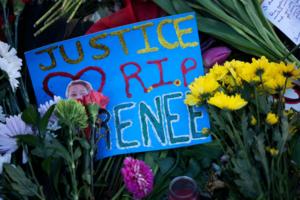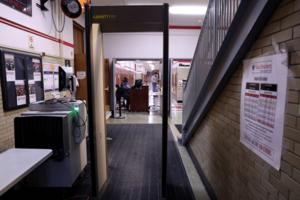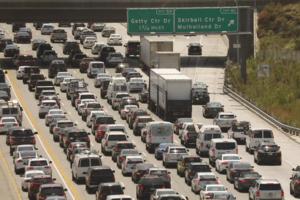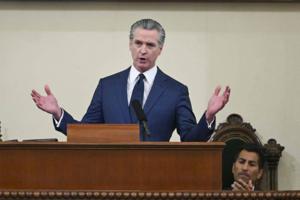Politics
/ArcaMax

Editorial: Trump's assault on free and fair elections continues
There are many things Donald Trump could regret about the aftermath of the 2020 election.
Perhaps it could be his nonstop lying about voter fraud, or how he was recorded asking Georgia election officials to “find” him the votes he needed. Maybe he has remorse about inciting the mob that attacked the U.S. Capitol, violence that led to seven ...Read more

Editorial: Illinois' biometric privacy law is the gift that keeps on giving – to trial lawyers
Although well-intended legislation, Illinois’ biometric privacy law has turned into a bonanza for opportunistic lawyers under the guise of protecting everyday people against threats to their personal data.
Take what happened on Dec. 17: The 7th U.S. Circuit Court of Appeals in Chicago upheld the certification of a class-action lawsuit against...Read more

Allison Schrager: Raiding your 401(k) to buy a house should be an option
I have a confession, shameful as it may be for someone who has spent decades studying retirement policy and advising individuals and institutions on how to save for and think about retirement: When I bought my apartment a few years ago, I raided my retirement account for the down payment.
Yes, I am well aware of the sacrosanct rule — never ...Read more

Rochelle Olson: 'F------ b----': What two words tell us about ICE and violence against women
Such a nasty woman.
Remember when Donald Trump, then a candidate for president, directed that invective at his Democratic opponent, then-Secretary of State Hillary Rodham Clinton?
It was October 2016, the third and final general election debate. Clinton was talking about raising taxes on the wealthy to fortify Social Security and took a ...Read more

Commentary: How I broke free of cannabis, and you can too
Just because marijuana is now a legalized, ubiquitous $32 billion business that’s outpacing alcohol to become America’s drug of choice doesn’t mean it’s good for you. The 21-year-old pot emporium clerk advising you which gummies to take for insomnia is not a physician or licensed pharmacist. While doctor-prescribed THC and CBD medicines ...Read more

Marc Champion: Europe can't afford a throwdown over Greenland
As a U.S. citizen living abroad, I sympathize with European outrage over Donald Trump’s naked attempt to bully Denmark, a particularly loyal NATO ally, into handing over Greenland. In fact, if he stays on this path I’d encourage Europeans to boycott American imports, social-media platforms, and maybe even the World Cup.
But as some leaders ...Read more

Editorial: Kids need to go to school. And schools need to give them a reason to show up
We spend tens of billions of dollars each year on K-12 public education in Illinois. We argue endlessly about how best to invest that money to improve student outcomes, and we despair when those investments don’t produce an adequately literate and numerate student population.
But our fixation on budgets and balance sheets may be obscuring ...Read more

Commentary: The rule of law is the foundation of civilization
The men you see in masks on your television savagely arresting people may not seem like your affair. But they are your affair and mine, and that of every other American.
U.S. Immigration and Customs Enforcement operates outside of the law. It doesn’t disclose charges, and no one arrested sees a court of law.
ICE agents are also the affair of...Read more

Commentary: We can't let Hegseth win his war on women
When Defense Secretary Pete Hegseth ordered all top brass to assemble in Quantico in September, he declared women could either meet male standards for combat roles or get cut.
Strong message, except the military was already doing that, so Hegseth was either oblivious or ignoring decades of history. Confusion aside, it reaffirmed a goal Hegseth...Read more

Commentary: The Trump administration launches Phase 2 of the Gaza plan. Will peace materialize?
You may have missed it due to the firehose of international news over the last week. But in between the CIA director traveling to Venezuela to meet deposed dictator Nicolás Maduro’s replacement and President Donald Trump’s on-again, off-again flirtation with bombing Iran, the White House made a pretty big announcement on Gaza: The 20-point ...Read more

Commentary: Transit through the Sepulveda Pass is the first step in redesigning LA's future
The 405 Freeway through the Sepulveda Pass is an infamous stretch of roadway known around the world for all the wrong reasons. It’s a mountainous choke point that can bring traffic between the Valley and the Westside to a grinding halt at any time of day. Drivers attempting to connect to the 405 often find themselves trapped, and the main ...Read more

Editorial: California billionaires flee to Nevada
Envy produces terrible public policy.
The Service Employees International Union-United Healthcare Workers West, a major California union, is currently pushing a wealth tax initiative. Unlike an income or sales tax, a wealth tax would confiscate 5 percent of the net worth of California’s billionaires, whether they’ve actually realized the ...Read more

Editorial: Talk of invading Greenland is irresponsible
There is nothing inherently wrong with President Donald Trump’s pursuit of Greenland. But threatening to seize the island through military force is ridiculous, counterproductive and anathema to America’s values.
U.S. attempts to purchase Greenland — an autonomous territory of Denmark, a NATO ally — date to the 19th century. The United ...Read more

Lynn Schmidt: Trump's push for Greenland risks breaking NATO's core pact
Step back and try to make sense of President Donald Trump’s foreign policy and national security objectives when it comes to acquiring Greenland.
It's not easy.
If stopping Russia and China are the objectives for taking control of Greenland, there are much smarter ways to do it, including increasing U.S. support for the NATO and backing ...Read more

George Skelton: New California Senate leader Monique Limón, 'kind, generous' and a 'badass'
SACRAMENTO, Calif. — People often ask me how things have changed at the state Capitol since I began covering news there many decades ago. My latest short answer: Look at the new California Senate leader.
In fact, look at the entire Senate. Actually, the other legislative house, too, the Assembly.
There was only one female legislator when I ...Read more

Mary McNamara: My travel nightmare made me realize that self-service culture is capitalism's greatest con
The sun is shining, the fire threat is low and for the first time in 25 years, no part of California is experiencing drought. Except of course in the hope and joy department.
It’s the middle of January, which means the holidays are well and truly over and whatever fanciful shine the prospect of a “new” year held as it approached has ...Read more

Commentary: Congress and Trump could both get behind this concrete step to cut housing costs
Nearly 70% of American adults polled recently said that the central promise of the American Dream — that hard work can earn a good life — is no longer true or never was.
It’s easy to understand why. Decades of policy choices, rising costs and stagnant wages have eroded the path that once led from work to security. An affordability crisis ...Read more

Commentary: The Cuban people's resilience is a strength but also a trap
When I heard President Donald Trump boast early this month that Cuba, without the aid of a decapitated Venezuela, appears “ready to fall,” I immediately thought of Joseito, a Cuban man in his mid-30s I got to know a few years ago while doing research for a book. He lived in Havana with his wife and two young daughters in the rooms adjacent ...Read more

Lisa Jarvis: The push for lower US drug prices uses bad logic
The need to address the high cost of prescription drugs is one of the rare areas of concordance in our divided country. Americans across the political spectrum can agree that seniors shouldn’t have to ration pills, cancer patients shouldn’t need a GoFundMe campaign to afford treatment, and that too many Americans are making steep sacrifices ...Read more

Commentary: It's a police state in Minnesota
On Jan. 8, in the White House press room, Vice President JD Vance declared that the ICE officer who shot and killed Renee Good in Minneapolis on Jan. 7 “is protected by absolute immunity.” His assertion came before any investigation was conducted and before all the facts were known.
“Absolute immunity”? In the United States? In a ...Read more




















































